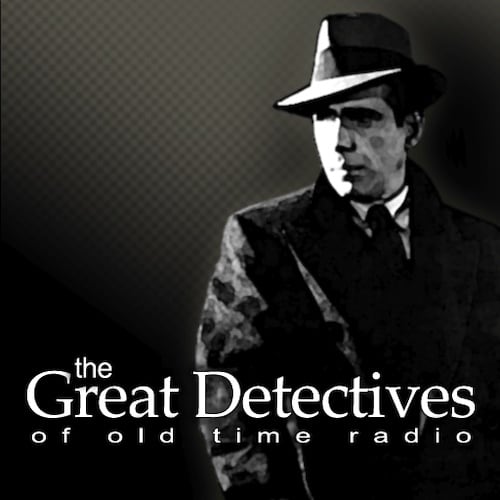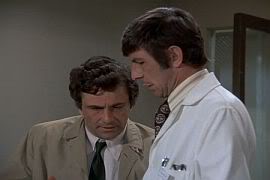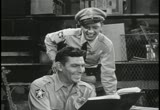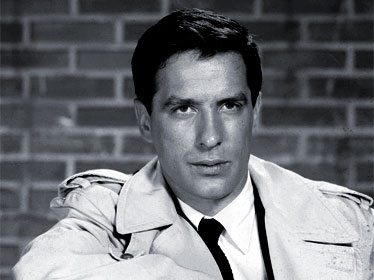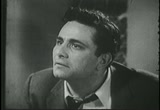It’s impossible to talk about the final years of the golden age of radio without talking about what brought about its decline. In the years immediately after the War, television was a joke on radio. It was said to feature little more than professional wrestling and old movies that weren’t that good when they were first shown in theaters.
Long-time radio comedian Fred Allen said in 1950, “I’ve decided why they call television a medium. It’s because nothing on it is well done.”
In the same year, on Life of Riley radio program, Chester Riley (played by William Bendix) talked about when he was planning on getting a television. He cited waiting for new models come out with improvements. When asked what improvements Riley was waiting for, he replied, “Someday, they’ll put on entertainment.”
There was truth behind the jokes. In the early days of television, home viewing audiences were smaller, the technology was experimental, and the limited audience meant limited advertising revenues and smaller budgets. TV stations didn’t have the money to license A-films to be played on television. When they made original productions, they couldn’t afford glamourous talented actors, so they often settled for those who were glamourous but with minimal talent. Actresses being hired to show skin exasperated actor William Gargan, who left his role on the successful Martin Kane, Private Eye television program with a 7 year contract to go back to radio.
Television also came with a steep learning curve. Like radio, most television programs were live. However, on radio an actor could flub a line and find his place by looking at the script. Television required working without a net. Yet, Americans wanted television to succeed. Development of the medium had been ongoing since before World War II. Now, with hard-earned savings, America wanted television. My father came at age around this time and he waxed nostalgic about actors blowing their lines on live TV. With America hungry for television, even its bugs became features.
Most radio performers suspected it would catch on and most would play a part in it. Fred Allen would spend his last days on a TV game program, and William Bendix would come to TV as Chester Riley as soon as Bendix’s studio would allow it.
Television Built on the Foundation of Radio
Television set out to give Americans the same programs they enjoyed on radio. Early TV was filled with detective shows, dramatic anthologies, family comedies, and soap operas. The links between early television and the golden age of radio run deep.
Perhaps the greatest television hit of all time, I Love Lucy, hit radio in 1952. The series starred Lucille Ball, who had starred in another domestic comedy My Favorite Husband. Many scripts used on I Love Lucy were reworked scripts from My Favorite Husband.
Oftentimes, the programs directly moved from radio to television. TV programs like The Life of Riley, Our Miss Brooks, My Friend Irma, Dangerous Assignment, The Line-Up, Suspense, the Adventures of Superman, The Lux Video Theater, and You Bet Your Life all had roots in radio. In some cases, cast members were changed, but in others, you got to see all the old radio favorites that you’d only heard for all these years.
Radio comedy legends like Red Skelton, Burns and Allen, and Jack Benny also made the transition to television. In addition, the Colgate Comedy Hour became a place where noted radio stars like Eddie Cantor, Abbott and Costello, and Dean Martin and Jerry Lewis took center stage in live shows.
Many programs became so successful and so associated with television, only the most dedicated even knows there was a radio version. Dragnet aired two and a half years over radio before coming to television and would air for eight seasons in the 1950s and make four more seasons in a comeback in the 1960s. The Adventures of Ozzie and Harriet aired on radio seven and a half years before the television show premiered and would last on television for fourteen seasons. Guiding Light had fifteen years on radio before its television debut and would continue on television for fifty-seven years.
Other programs crashed and burned, often hard. Radio hits like Gangbusters, Life with Luigi, and The Great Gildersleeve didn’t last long on television. An ill-considered version of Fibber McGee and Molly without Jim and Marion Jordan also failed to catch on on television.
Some radio shows proved to work better on television. Audience participation programs like People are Funny and Truth or Consequences are better when the audience can see the outrageous stunts the contestants are sent on and Candid Camera was far more enduring than Candid Microphone. In addition, physical comedians like Lou Costello or Jerry Lewis were limited by radio and television allows their full zaniness to show.
Other radio shows used techniques that didn’t work on television. In the finale of the Dragnet radio episode, “The Big Bar,” the audience gets to hear the police radio as police cars chase down the suspects, with occasional commentary from our heroes and people in the radio room. In the television version, we’re treated to several minutes of the cameraman trying to find interesting shots of people standing around the radio room, listening to the chase on the radio.
Baby Snooks (Fanny Brice) was a beloved seven-year old girl who bedeviled her daddy with her questions and bad behavior. A decision was made to do a television version with the 59-year-old Brice accompanied by her father, who was played by Hanley Stafford, a man eight years her junior. Her television audience didn’t appreciate an adult actress playing a child’s role on a live action show, so she didn’t repeat the appearance again.
While many of those who made the golden age of radio special moved to television, radio drama still continued. In our next article, we’ll look at the final years of the golden age of radio.
